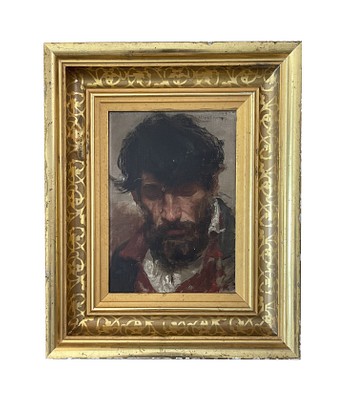Francisco Benjamin Lopez Toledo (1940 - 2019) Mexico
Lot 230
About Seller
Coral Gables Auction LLC
2377 Coral Way
Coral Gables, FL 33145
United States
We are an auction house with a lot of knowledge of our work environment. We recited at Miami FL. We have professionals with more than 30 years of experience. We work hard to provide our subscribers with the best descriptions of the auctioned pieces and their provenance, in addition to providing good...Read more
Estimate:
$1,500 - $2,500
Absentee vs Live bid
Two ways to bid:
- Leave a max absentee bid and the platform will bid on your behalf up to your maximum bid during the live auction.
- Bid live during the auction and your bids will be submitted real-time to the auctioneer.
Bid Increments
| Price | Bid Increment |
|---|---|
| $0 | $25 |
| $500 | $50 |
| $1,000 | $100 |
| $3,000 | $250 |
| $10,000 | $500 |
| $20,000 | $1,000 |
| $50,000 | $2,500 |
| $100,000 | $5,000 |
| $200,000 | $10,000 |
| $500,000 | $25,000 |
About Auction
By Coral Gables Auction LLC
Aug 28, 2022
Set Reminder
2022-08-28 13:00:00
2022-08-28 13:00:00
America/New_York
Bidsquare
Bidsquare : Fine & Decorative Arts Online Auction #033
https://www.bidsquare.com/auctions/coral-gables-auction-llc/fine-decorative-arts-online-auction-033-10183
This auction has 260 pieces. There is a great variety of paintings and decorative pieces Coral Gables Auction LLC coralgablesauction@yahoo.com
This auction has 260 pieces. There is a great variety of paintings and decorative pieces Coral Gables Auction LLC coralgablesauction@yahoo.com
- Lot Description
Francisco Benjamin Lopez Toledo (1940 - 2019) Mexico
Mixed Media on Paper
Measure 19"in H x 27"in W and 27"in H x 33"in W with frame
Known for: Fantasy animal and people painting, prints, collages, tapestries, ceramics
Biography: Throughout his career, Francisco Toledo, born 1940, was dedicated to promoting and defending the arts and culture of his birthplace, Oaxaca, Mexico. From a very early age, Toledo's artistic talent and abilities were recognized. He studied art in Oaxaca during his youth and as a young man moved to Paris to continue his studies. While residing in France he traveled throughout Europe where he saw and was influenced by the work of many artists, including Paul Klee and Jean Dubuffet. However, unlike these European artists, Francisco Toledo's work never became completely abstract. Upon his return to Mexico, Francisco Toledo began promoting and protecting the arts and crafts of Oaxaca with an intense vigor. He was very concerned about social and cultural state of his birthplace and this became evident in his body of work. Toledo's artistic production manifested itself in a number of media, including pottery, sculpture, weaving, graphic arts and painting. Throughout his production, Toledo consciously imbued his art with symbols and references to Mexican heritage, history and mythology. From early on in his career, Francisco Toledo was considered an independent painter. He did not involve himself with the nationalistic themes that were so pervasive among the artists of the Mexican School (i.e. Diego Rivera, Jose Clemente Orozco and David Alfaro Siquieros). Rather, Toledo was associated with the group known as la Raptura. La Raptura was a movement in Mexican art in the late 50s and 60s in which painters and sculptors broke away from depicting the bright, folkloric scenes or subjects tied to Mexican history and the Mexican Revolution. Although he was associated with this group, Francisco Toledo has always maintained his fundamental character as an autonomous painter. One of the most pervasive themes in Toledo's paintings is animals. He presents animals as part of a symbiotic relationship between the painter and the rural indigenous world. He believes in a world where all men, like the flora and fauna that surrounds them, are fundamental to the understanding of the universe. Many of the animals that he has painted appear mythical and appear to have come from prehistoric worlds. In reality, his images have their origin in the experiences of his youth in Oaxaca. As a result of the relationship between his canvases and his homeland, Toledo's compositions often adopt a tonality similar to that of the arid landscape of Oaxaca. "Mujer-Caballo" and "Mujer-Pajaro" are both definitive examples of these phenomena in Toledo's oeuvre. - Shipping Info
-
For Shipping Information Please send Email to info.coralgablesauction@yahoo.com
-
- Payment & Auction Policies
-
Available payment options
-
-
- Buyer's Premium



 EUR
EUR CAD
CAD AUD
AUD GBP
GBP MXN
MXN HKD
HKD CNY
CNY MYR
MYR SEK
SEK SGD
SGD CHF
CHF THB
THB























